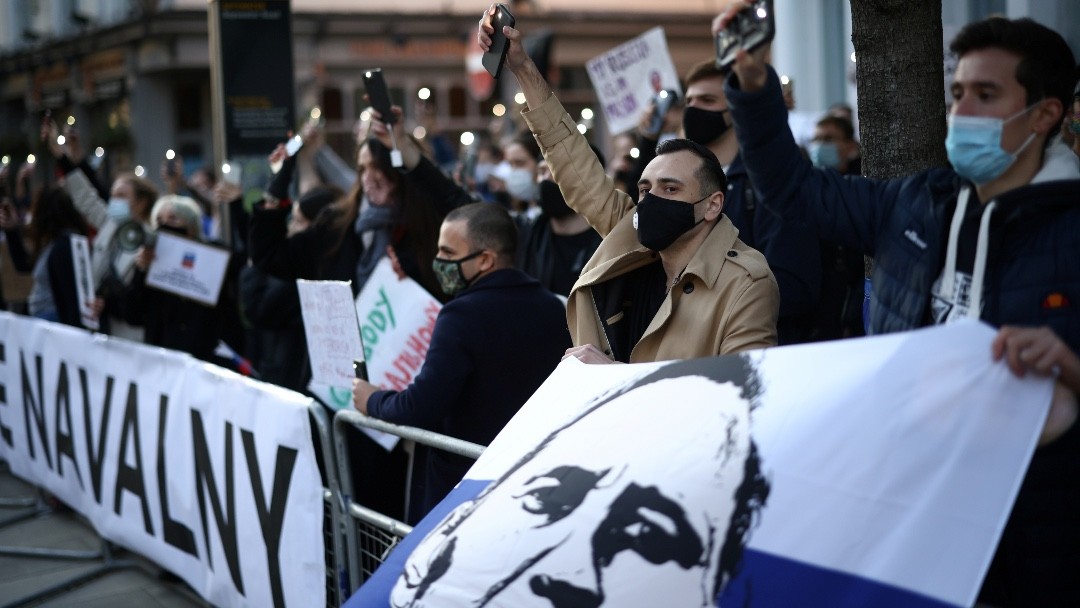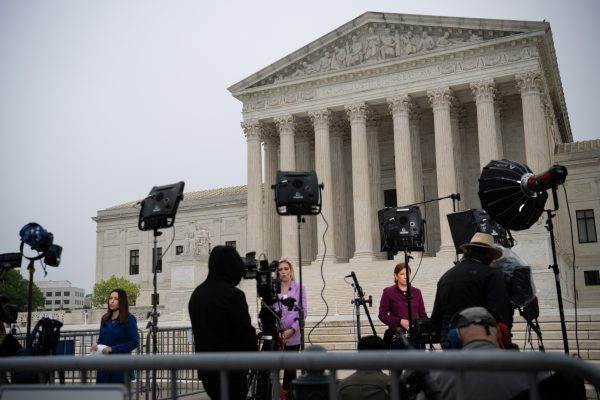As Russia sends tanks and soldiers to take over Ukraine, it is also dispatching censors and regulators to strangle the Internet. In this special series by the Center for European Policy Analysis, The New Iron Curtain, Senior Fellows Andrei Soldatov and Irina Borogan argue that both invasions are linked and represent the culmination of a more than a decade-long trend to throttle the free and open flow of information in Russia.
In August 1991, the nascent Russian Internet helped spread the message to the West that the KGB-led putsch had failed to suppress the desire for democratic changes. The message was the truth, and Boris Yeltsin and the Muscovites who went to the streets had emerged victorious.
For two decades, the Internet in Russia developed free of government control. Unlike China, where censorship was part of the national Internet infrastructure, President Vladimir Putin’s Russia built no Great Firewall. It attempted to clamp down step by step, with mixed success.
This hands-off approach began to change in 2007. Russian courts began requiring Internet providers to cut off access to banned sites, which were designated as extremist. Yet the orders were far from systematic. Websites blocked in one region remained accessible in others.
The Internet played a key role in protests in 2011 and 2012 opposing Putin’s return to the presidency. Tens of thousands took to the streets. No political party or movement directed these protests. All were organized via social media — Facebook or Vkontakte, Russia’s version of Facebook.
Putin was outraged. A month after he took office for a third presidential term, the Duma introduced new legislation which became the basis for the first nationwide system of Internet filtering. It established a single register of illegal websites. Several government agencies were given the power to designate sites to be banned.
Roskomnadzor, Russia’s Agency for the Supervision of Information Technology, Communications, and Mass Media, began by blacklisting sites with content including suicide, drugs, child pornography, and extremism. Its definition of extremism remained vague. It included any kind of information critical of the Kremlin, including “propaganda of separatism,” online casinos, cryptocurrency, and even sites that sold fake university diplomas.
Under the new rules, Russian Internet providers and mobile operators were required to check the blacklist register daily and block prohibited materials. Soon thousands of websites were banned.
Yet the filtering system failed. Thousands of sites were blocked by mistake. Russians found it easy to access banned websites using simple circumvention tools such as Tor or a VPN. Although Roskomnadzor cut off access to thousands of websites, it stopped short of banning popular media. VKontakte and Facebook became the public spaces Russians used to discuss politics and share news.
That changed in March 2014, after Russian troops invaded and took control of Crimea, in Ukraine. Roskomnadzor blocked three important independent media outlets – ej.ru, grani.ru, and kasparov.ru. It banned the blog of Alexey Navalny, a leading opposition politician.
Putin realized that social media represented the largest challenge to the Kremlin’s narrative, and he launched a new offensive against the leading Russian platform VKontakte. In the spring of 2014, the government took control of the company. It forced the founder into exile and replaced him with a Kremlin stooge.
The crackdown didn’t work as planned. Soon after the war in Ukraine began in the summer of 2014, Russian soldiers, proud of their military mission in the neighboring country, started posting photos on VKontakte. Russian authorities continued to deny Russian military involvement, but they failed to stop the flow of information from the young men. Russian military presence in Ukraine was exposed to the world, complete with soldiers’ names, their military affiliation, and their exact location.
In the spring of 2015, Russian authorities ran a test to see whether it was possible to cut the Russian Internet off from the larger global network. The attempt failed – traffic kept leaking in both directions.
Censorship was not the only Kremlin objective. Authorities also wanted to improve their capabilities of spying on Russian users. It required Google, Twitter, Facebook, and other global platforms to relocate their servers inside Russia and store their Russian users’ data in the country starting in September 2015.
Western companies balked. They managed to find workarounds to sabotage the order, paying fines when needed. In 2016, the Kremlin banned LinkedIn after the employment platform failed to comply with local data storage requirements. However, for unexplained reasons, it held back from blacklisting Facebook or Twitter. Were they too popular? Had they made concessions to the government in private?
In July 2018 a new repressive legislation, the so-called “Yarovaya law,” (named after parliamentarian Irina Yarovaya) came into force. It required telecom and Internet operators to save their users’ data, including phone conversations, text messages, photos, and videos – and to make the information available to the FSB intelligence service. Most Russian operators complied, though the costs of compliance caused some initial resistance.
Despite Putin’s best efforts, it became clear that Russia’s Internet filtering system was ineffective. Basic circumvention tools allowed access to blocked information. The Kremlin realized that a new approach was needed.
Andrei Soldatov is a nonresident senior fellow with the Center for European Policy Analysis. Andrei is a Russian investigative journalist, co-founder, and editor of Agentura.ru, a watchdog of the Russian secret services’ activities. He has been covering security services and terrorism issues since 1999.
Irina Borogan is a nonresident senior fellow with the Center for European Policy Analysis. Irina is a Russian investigative journalist, co-founder, and deputy editor of Agentura.ru, a watchdog of the Russian secret services’ activities.
READ MORE

Part 3: The Internet is a Western Plot
In 2017, Russia vowed to make its Internet sustainable and self-sufficient. In reality, the Kremlin undertook its first systematic effort to control its cyberspace.
Bandwidth is CEPA’s online journal dedicated to advancing transatlantic cooperation on tech policy. All opinions are those of the author and do not necessarily represent the position or views of the institutions they represent or the Center for European Policy Analysis.





